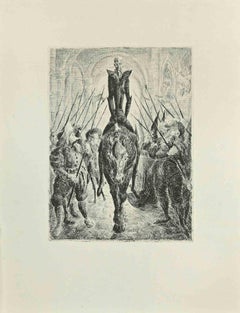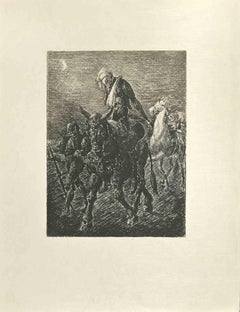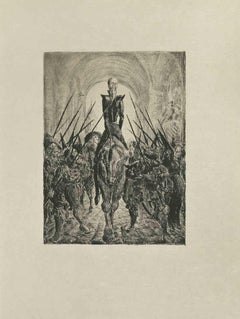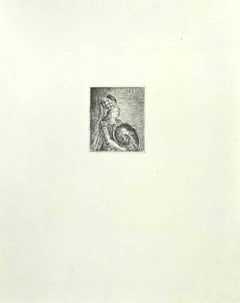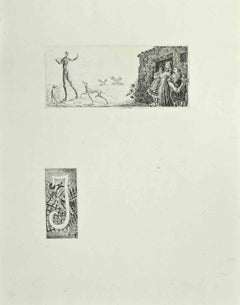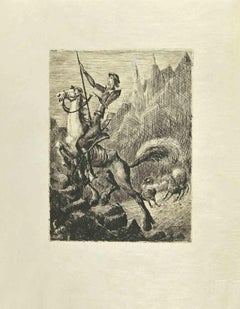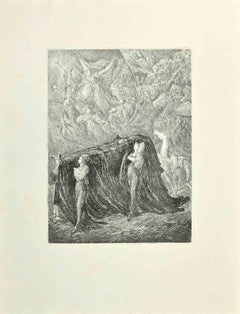Don Quixote Etching
1950s Contemporary Figurative Prints
Etching
1950s Contemporary Figurative Prints
Etching
1950s Contemporary Figurative Prints
Etching
1950s Contemporary Figurative Prints
Etching
1950s Contemporary Figurative Prints
Etching
1950s Contemporary Figurative Prints
Etching
1950s Contemporary Figurative Prints
Etching
1950s Contemporary Figurative Prints
Etching
1950s Contemporary Figurative Prints
Etching
1950s Contemporary Figurative Prints
Etching
1950s Contemporary Figurative Prints
Etching
Early 20th Century French School Figurative Prints
Handmade Paper, Etching
1970s Folk Art Figurative Prints
Etching
1950s Contemporary Figurative Prints
Etching
1950s Contemporary Figurative Prints
Etching
1950s Contemporary Figurative Prints
Etching
1950s Contemporary Figurative Prints
Etching
1950s Contemporary Figurative Prints
Etching
1950s Contemporary Figurative Prints
Etching
1950s Contemporary Figurative Prints
Etching
1950s Contemporary Figurative Prints
Etching
1950s Contemporary Figurative Prints
Etching
1950s Contemporary Figurative Prints
Etching
1950s Contemporary Figurative Prints
Etching
1980s Contemporary Abstract Prints
Etching
Early 20th Century French School Figurative Prints
Handmade Paper, Etching
1970s Folk Art Figurative Prints
Etching
1950s Contemporary Figurative Prints
Etching
1950s Contemporary Figurative Prints
Etching
1950s Contemporary Figurative Prints
Etching
1950s Contemporary Figurative Prints
Etching
1950s Contemporary Figurative Prints
Etching
1950s Contemporary Figurative Prints
Etching
1950s Contemporary Figurative Prints
Etching
1950s Contemporary Figurative Prints
Etching
1950s Contemporary Figurative Prints
Etching
1950s Contemporary Figurative Prints
Etching
1950s Contemporary Figurative Prints
Etching
1950s Contemporary Figurative Prints
Etching
1950s Contemporary Figurative Prints
Etching
1950s Contemporary Figurative Prints
Etching
1950s Contemporary Figurative Prints
Etching
1950s Contemporary Figurative Prints
Etching
1950s Contemporary Figurative Prints
Etching
1980s Surrealist Figurative Prints
Etching, Aquatint
1980s Surrealist Figurative Prints
Etching, Aquatint
1980s Surrealist Figurative Prints
Etching, Aquatint
1960s Modern Figurative Prints
Etching, Aquatint
1970s Abstract Abstract Prints
Etching
Early 2000s Contemporary Figurative Drawings and Watercolors
Mixed Media, Watercolor, Graphite, Drypoint, Etching
1970s Surrealist Figurative Prints
Etching
1950s Contemporary Figurative Prints
Etching
1950s Contemporary Figurative Prints
Etching
1950s Contemporary Figurative Prints
Etching
1950s Contemporary Figurative Prints
Etching
1950s Contemporary Figurative Prints
Etching
1950s Contemporary Figurative Prints
Etching
Early 20th Century French School Figurative Prints
Handmade Paper, Etching
1980s Surrealist Portrait Prints
Etching
1970s Surrealist Animal Prints
Etching
- 1
Don Quixote Etching For Sale on 1stDibs
How Much is a Don Quixote Etching?
Finding the Right Figurative-prints-works-on-paper for You
Bring energy and an array of welcome colors and textures into your space by decorating with figurative fine-art prints and works on paper.
Figurative art stands in contrast to abstract art, which is more expressive than representational. The oldest-known work of figurative art is a figurative painting — specifically, a rock painting of an animal made over 40,000 years ago in Borneo. This remnant of a remote past has long faded, but its depiction of a cattle-like creature in elegant ocher markings endures.
Since then, figurative art has evolved significantly as it continues to represent the world, including a breadth of works on paper, including printmaking. This includes woodcuts, which are a type of relief print with perennial popularity among collectors. The artist carves into a block and applies ink to the raised surface, which is then pressed onto paper. There are also planographic prints, which use metal plates, stones or other flat surfaces as their base. The artist will often draw on the surface with grease crayon and then apply ink to those markings. Lithographs are a common version of planographic prints.
Figurative art printmaking was especially popular during the height of the Pop art movement, and this kind of work can be seen in artist Andy Warhol’s extensive use of photographic silkscreen printing. Everyday objects, logos and scenes were given a unique twist, whether in the style of a comic strip or in the use of neon colors.
Explore an impressive collection of figurative art prints for sale on 1stDibs and read about how to arrange your wall art.
- What is etching?1 Answer1stDibs ExpertSeptember 25, 2019
Etching is a method of making prints using metal plates onto which a design has been incised by acid.
- What is a Picasso etching?1 Answer1stDibs ExpertApril 5, 2022An etching is created by cutting down a metal plate with chemicals, including acid, to achieve the desired image. The metal plate is then inked and pressed onto a piece of paper. Picasso became fascinated with etchings when he moved to Paris in the early 1900s, and would go on to pioneer new techniques with etchings throughout his career. Shop a selection of Pablo Picasso pieces from some of the world’s top art dealers on 1stDibs.
- What are the types of etching?1 Answer1stDibs ExpertSeptember 25, 2019
There is dry and wet etching.
- How do you identify an etching?1 Answer1stDibs ExpertNovember 26, 2024To identify an etching, look in the corners and on the back for an artist's signature or publisher information. Cross-referencing markings with information shared on trusted online resources can allow you to determine the artist. From there, you can browse online and print catalogues of their work to find out the title and date of the etching. In terms of how to tell an etching apart from other types of prints, one telltale sign is the appearance of slightly blurry lines along the edges. Called plate marks, these lines form from the pressure exerted by the plate during the etching process. You may need a magnifying glass to spot the plate mark on a print. If you have any difficulty with the identification process, consider enlisting the help of a certified appraiser or experienced art dealer. Shop a collection of etchings on 1stDibs.
- What is etched glass?1 Answer1stDibs ExpertFebruary 22, 2021Etched glass is a type of decorative glass which is the result of small cuts made to the glass. The cuts, which appear white, typically form patterns or images.
- What is vintage etching?1 Answer1stDibs ExpertApril 5, 2022Vintage etching is a term that refers to a specific type of print produced between 50 and 100 years ago. Printmakers produced etchings by carving images into a copper plate and then soaking it in an acid bath. Then, they applied ink to the plate and pressed it against paper or another material to create an image. On 1stDibs, find a collection of vintage etchings.
- What is an original etching?1 Answer1stDibs ExpertMarch 13, 2024An original etching is a print produced during the first production run of a print series. After making an etching plate, an artist will create a limited number of etchings. Collectively, these prints are the original etchings. They differ from restrike etchings made years later, sometimes after the death of the artist. On 1stDibs, shop a diverse assortment of etchings.
- 1stDibs ExpertOctober 24, 2024To tell a lithograph from an etching, look closely along the edges of the print. Etching is a way of incising lines on a metal plate by first drawing on an acid-resistant coating, or ground, to reveal the metal beneath. Lithography uses a stone rather than a plate. As a result, etchings will usually have a faint imprint or indentation called a plate mark, while a lithograph will not. Researching the artist using trusted online resources may also be helpful, as some printmakers worked exclusively with etchings or lithographs. Find a large selection of lithographs and etchings on 1stDibs.
- Did Picasso make etchings?1 Answer1stDibs ExpertApril 5, 2022Yes, Pablo Picasso made etchings and took that foundation into an exploration of printmaking and the different methods of that medium. Picasso first began working on etchings in the early 1900s, quickly mastering the technique, and then he began expanding and pushing the boundaries to create a unique and signature style. On 1stDibs, find a variety of original artwork from top artists.
- Can I etch the back of a mirror?1 Answer1stDibs ExpertApril 5, 2022Yes, you can etch on the back of a mirror. Modern mirrors typically have a reflective layer that is deposited on the back of the glass. If you want to etch the back of a mirror you need to remove the reflective layer, which can be done with an engraving tool or with an etching solution. Shop a range of antique and modern mirrors on 1stDibs.
- 1stDibs ExpertAugust 26, 2024The difference between an etching and a print depends on how specific the terms are. Print is a general term for any type of artwork made by transferring an image onto another material, such as paper or fabric. A specific printmaking technique, etching is a way of incising lines in a metal plate by first drawing on an acid-resistant coating, or ground, to reveal the metal beneath. The plate is then submerged in acid, which “bites” the lines into the metal plate. On 1stDibs, find a large selection of etchings and other prints.
- 1stDibs ExpertOctober 15, 2024To tell if an etching is valuable, one approach is to conduct research using trusted online resources. The maker, age, image quality, historical significance and overall condition all play a role in determining the potential value of an etching. By seeing how much similar etchings have sold for in the past, you can get a rough idea of how much your piece may be worth. However, experts generally recommend having a certified appraiser or experienced art dealer evaluate prints for a more accurate valuation. Find a wide range of etchings on 1stDibs.
- 1stDibs ExpertApril 3, 2024The difference between a lithograph and an etching is that while both are types of prints, they are made using different techniques. With respect to lithography, the image to be printed is drawn or painted on a stone or metal plate with an oil-based substance, such as a greasy crayon or tusche (an oily wash). The stone is then covered with water, which is repelled by the oily areas. Oil-based ink is then applied to the wet stone, adhering only to the oily image. Afterward, the stone is covered with a sheet of paper and run through a press.
Etching is a way of incising lines in a metal plate by first drawing on an acid-resistant coating, or ground, to reveal the metal beneath. The plate is then submerged in acid, which “bites” the lines into the metal plate. The ground is then removed and the plate is inked for pressing.
Find a collection of lithographs for sale on 1stDibs. - 1stDibs ExpertAugust 26, 2024The difference between etching and aquatint is technique. Invented in the 1500s, etching is a way of incising lines in a metal plate by first drawing on an acid-resistant coating, or ground, to reveal the metal beneath. The plate is then submerged in acid, which “bites” the lines into the metal plate. The ground is then removed, and the plate is inked for pressing. Etched lines tend to reveal the movement of the artist’s hand more than a technique like engraving, since the image is created on softer ground. Aquatint, a technique named for its resemblance to watercolor or ink wash, is often combined with etching to create rich tonal variations. It’s a similar process to etching, but the resin ground is more granulated, so the acid handles the metal differently. Different degrees of darkness are created based on the amount of time the plate is in contact with the acid. Find a collection of etchings and aquatint prints on 1stDibs.
- 1stDibs ExpertAugust 29, 2024To tell if an etching is original, first gently run your hand along its surface. An original etching will usually have a slight indentation in the image area left behind by the pressure applied by the plate during the printing process. Next, grab a magnifying glass and view the image up close. On an original, you won't see small dots making up the picture, but many reproductions do display dots due to their printing methods. Finally, look at the signature. Most original etchings will be hand-signed. If the signature is printed on your piece, it may be a reproduction. Consult a certified appraiser or experienced art dealer for an expert opinion on your print. Find a wide variety of etchings on 1stDibs.
- 1stDibs ExpertMarch 22, 2022Rembrandt's etchings are important because of the influence they had on printmaking. The printing techniques that he employed allowed each of his prints to seem very unique while making it possible for him to mass produce his images. Printmakers that followed utilized the advancements he made in the field to create and distribute their own prints. Find a range of Rembrandt art on 1stDibs.
- 1stDibs ExpertOctober 30, 2024Yes, some original etchings are worth something. Original signed prints by Old Masters like Rembrandt and Albrecht Dürer are particularly valuable, as are those made by modern artists such as Paul Klee, Henri Matisse, Martin Lewis and David Hockney. Generally, the artist, age, historical significance, image quality and overall conditions of etchings all contribute to their value. To learn how much your etching may be worth, seek the opinion of a certified appraiser or experienced art dealer. Explore a large collection of etchings on 1stDibs.
Read More
Joan Mitchell’s Rare, Late-Career Diptych Buzzes with Life
Beneath the inky blackness, the painter’s irrepressible energy electrifies this pair of intaglio prints.
The 1stDibs Guide to Types of Abstract Art
Get to know the key movements and artists who have influenced visual culture for more than a century.
Romare Bearden’s Humanity Infuses His Bright, Bold Art
Through collage, painting and printmaking, the artist foregrounded Black life in America in revolutionary new ways.
Andy Warhol and Suzie Frankfurt’s ‘Wild Raspberries’ Cookbook Is an Artful, Fanciful Delight
This set of recipes and original prints might not make you a better chef. But it will make you smile.
Art Brings the Drama in These Intriguing 1stDibs 50 Spaces
The world’s top designers explain how they display art to elicit the natural (and supernatural) energy of home interiors.
Welcome (Back) to the Wild, Wonderful World of Walasse Ting
Americans are rediscovering the globe-trotting painter and poet, who was connected to all sorts of art movements across a long and varied career.
Shapero Modern’s Director Tells Us All about 20th-Century Prints
Tabitha Philpott-Kent knows a lot of art multiples. Here, the London gallery director talks about what makes printmaking so fabulous.
Yoshitomo Nara Puts a Punk Rock Twist on the Traditional Prints of His Ancestors
The forever-rebellious Japanese artist craftily defaces famous Edo Period woodblock prints with “In the Floating World.”
